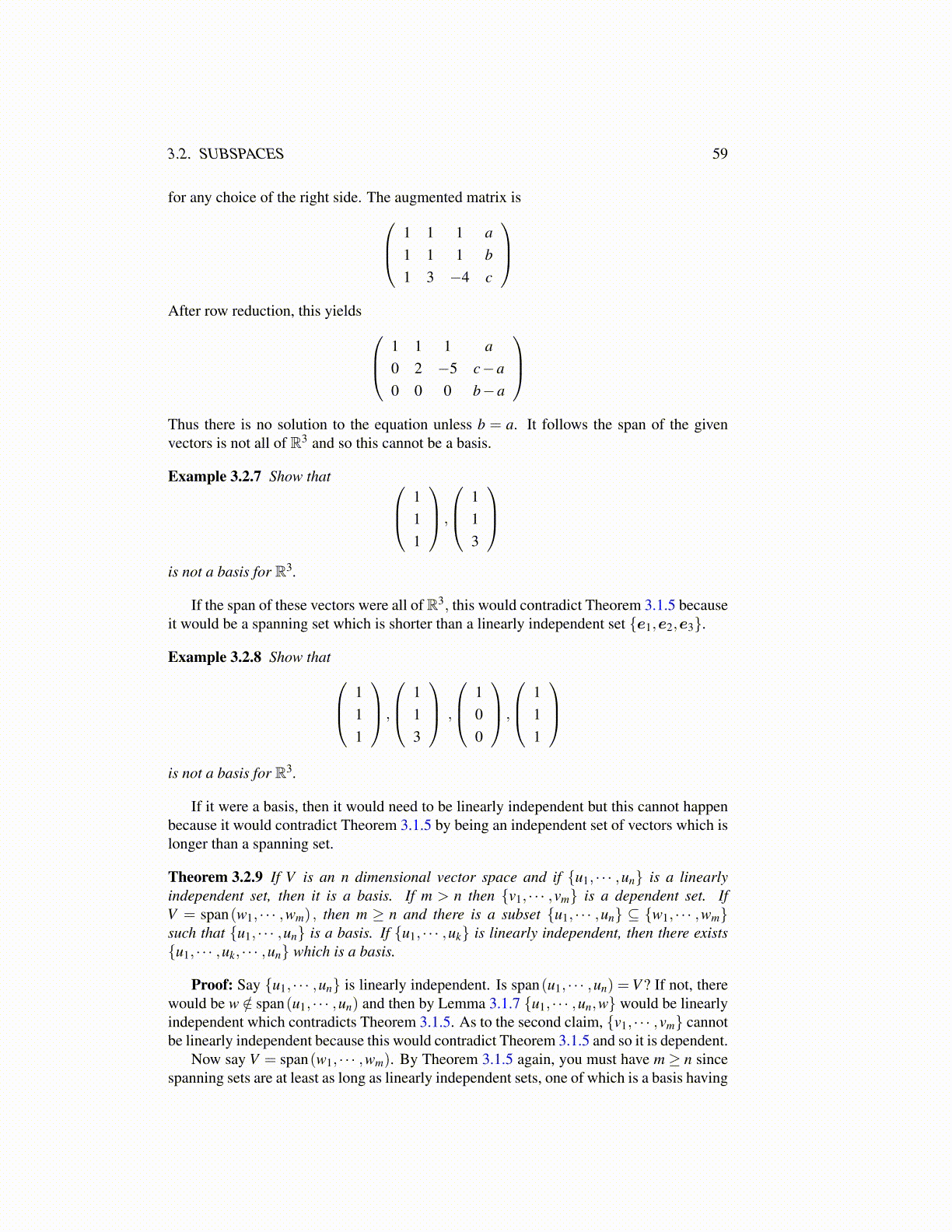
3.2. SUBSPACES 59
for any choice of the right side. The augmented matrix is 1 1 1 a1 1 1 b1 3 −4 c
After row reduction, this yields 1 1 1 a
0 2 −5 c−a0 0 0 b−a
Thus there is no solution to the equation unless b = a. It follows the span of the givenvectors is not all of R3 and so this cannot be a basis.
Example 3.2.7 Show that 111
,
113
is not a basis for R3.
If the span of these vectors were all ofR3, this would contradict Theorem 3.1.5 becauseit would be a spanning set which is shorter than a linearly independent set {e1,e2,e3}.
Example 3.2.8 Show that 111
,
113
,
100
,
111
is not a basis for R3.
If it were a basis, then it would need to be linearly independent but this cannot happenbecause it would contradict Theorem 3.1.5 by being an independent set of vectors which islonger than a spanning set.
Theorem 3.2.9 If V is an n dimensional vector space and if {u1, · · · ,un} is a linearlyindependent set, then it is a basis. If m > n then {v1, · · · ,vm} is a dependent set. IfV = span(w1, · · · ,wm) , then m ≥ n and there is a subset {u1, · · · ,un} ⊆ {w1, · · · ,wm}such that {u1, · · · ,un} is a basis. If {u1, · · · ,uk} is linearly independent, then there exists{u1, · · · ,uk, · · · ,un} which is a basis.
Proof: Say {u1, · · · ,un} is linearly independent. Is span(u1, · · · ,un) =V ? If not, therewould be w /∈ span(u1, · · · ,un) and then by Lemma 3.1.7 {u1, · · · ,un,w} would be linearlyindependent which contradicts Theorem 3.1.5. As to the second claim, {v1, · · · ,vm} cannotbe linearly independent because this would contradict Theorem 3.1.5 and so it is dependent.
Now say V = span(w1, · · · ,wm). By Theorem 3.1.5 again, you must have m ≥ n sincespanning sets are at least as long as linearly independent sets, one of which is a basis having